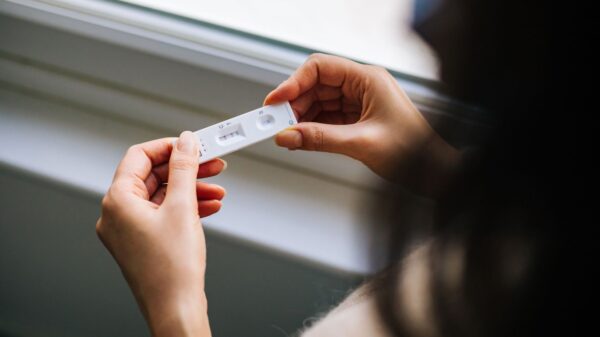
After being exposed to COVID-19, it’s crucial to understand when to take a self-test to ensure accuracy and help limit the spread of the virus. The timing can affect the test’s sensitivity in detecting an active infection. Generally, it has been recommended by the Centers for Disease Control and Prevention to test at least 5 full days after exposure. If you have symptoms, you should test immediately. If the result is negative, consider retesting in 48 hours to confirm, as early infection might not be picked up by the initial test.
Understanding your test result is also essential. A positive result indicates you are likely currently infected with COVID-19 and should be isolated according to public health guidance. If you test negative, you may not have COVID-19, but it doesn’t rule out infection, especially if tested too early after exposure. Continued monitoring of symptoms and adherence to public health measures is necessary.
To maintain preparedness, you may want to find lateral flow tests that can be used at home and provide quick results. Keeping a supply at home ensures you can test as soon as the need arises.
Key Takeaways
- Self-test at least 5 days post-exposure or immediately if symptomatic.
- A negative result may require follow-up tests.
- Maintain a supply of tests for timely testing.
Timing for Self-Testing After Exposure
Understanding when to conduct a self-test after potential exposure to COVID-19 is crucial for accurate results and to limit the spread of the virus.
Initial Testing Post-Exposure
After you’ve been exposed to COVID-19, it’s advisable to take an initial test as soon as possible. You should ideally perform this test within 3-5 days post-exposure, as it aligns with the common incubation period for the virus. Testing within this time frame enhances the likelihood of detecting COVID-19 if you’ve been infected.
Follow-Up Testing
Even if your initial test result is negative, consider taking a follow-up test a few days later. The virus may take time to reach detectable levels, so a second test can confirm your status. If experiencing symptoms, or if a repeated exposure occurs, immediate follow-up testing is suggested.
Factors Influencing Testing Timeline
Several factors may influence your ideal testing timeline, including:
- Type of exposure: Higher-risk exposures may warrant more immediate testing.
- Vaccination status: Fully vaccinated individuals may have different guidelines.
- Symptom onset: Symptomatic individuals should test immediately.
Each stage of testing is critical to maintaining your health and the safety of those around you. After using a test kit, it’s also essential to manage safe and responsible disposal to prevent potential contamination.
Understanding Test Results
After taking a COVID-19 self-test, interpreting the results accurately is crucial to managing your health and preventing the spread of the virus. Correct interpretation ensures you take the right steps following the test.
Interpreting Positive Results
If you receive a positive result from your COVID-19 self-test, it indicates that viral proteins have been detected in your sample, and you are likely to be infected with the virus. It’s important to isolate immediately to prevent transmitting the virus to others. It’s also essential to confirm the result with a PCR test, if available, as it is more sensitive and can detect lower levels of the virus.
Interpreting Negative Results
A negative result suggests that you may not have the virus at the time of the test. However, this does not guarantee that you are not infected, as you could be in the early stages of infection or the viral load might be too low for detection. It’s still important to follow standard precautions such as mask-wearing and hand hygiene. To avoid common mistakes in self-testing, ensure you follow the instructions carefully.
When to Seek Medical Advice
Regardless of whether your test result is positive or negative, you should seek medical advice if you experience severe symptoms such as difficulty breathing, chest pain, or a high, persistent fever. Consult with healthcare professionals who can provide guidance based on a comprehensive assessment of your condition. They will advise on any next steps, which may include further testing or treatment.
Conclusion
After a known exposure to COVID-19, you should wait at least five full days before taking a self-test. This is the guidance from the Centres for Disease Control and Prevention (CDC), as testing too early can result in false negatives. If you develop symptoms of COVID-19, it’s important to test immediately, regardless of the exposure timeline.
During this waiting period, it’s advised to self-isolate to reduce the risk of transmitting the virus to others. Remember, if an initial rapid test is negative but symptoms persist, a follow-up test or a more sensitive PCR test should be considered. This approach helps to ensure that you’re responding appropriately to potential infection and helping to curb transmission within the community.
